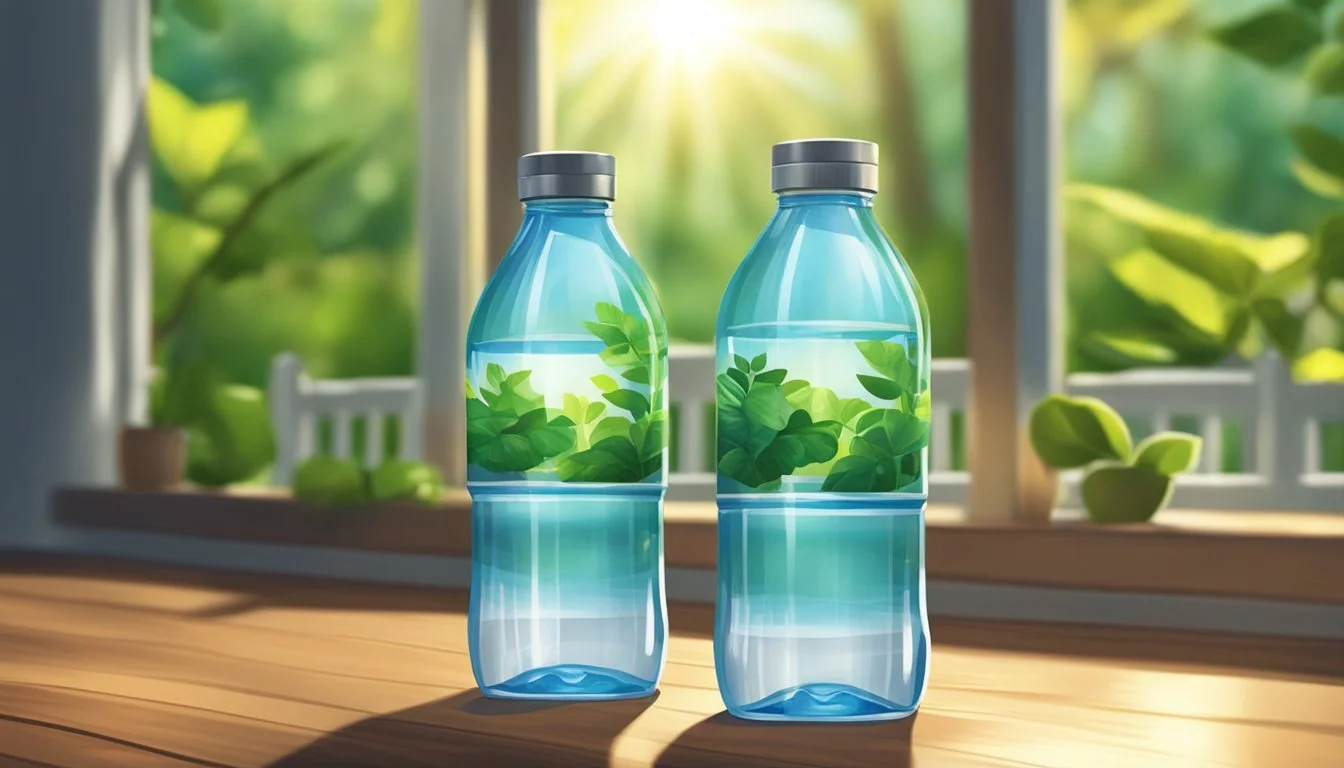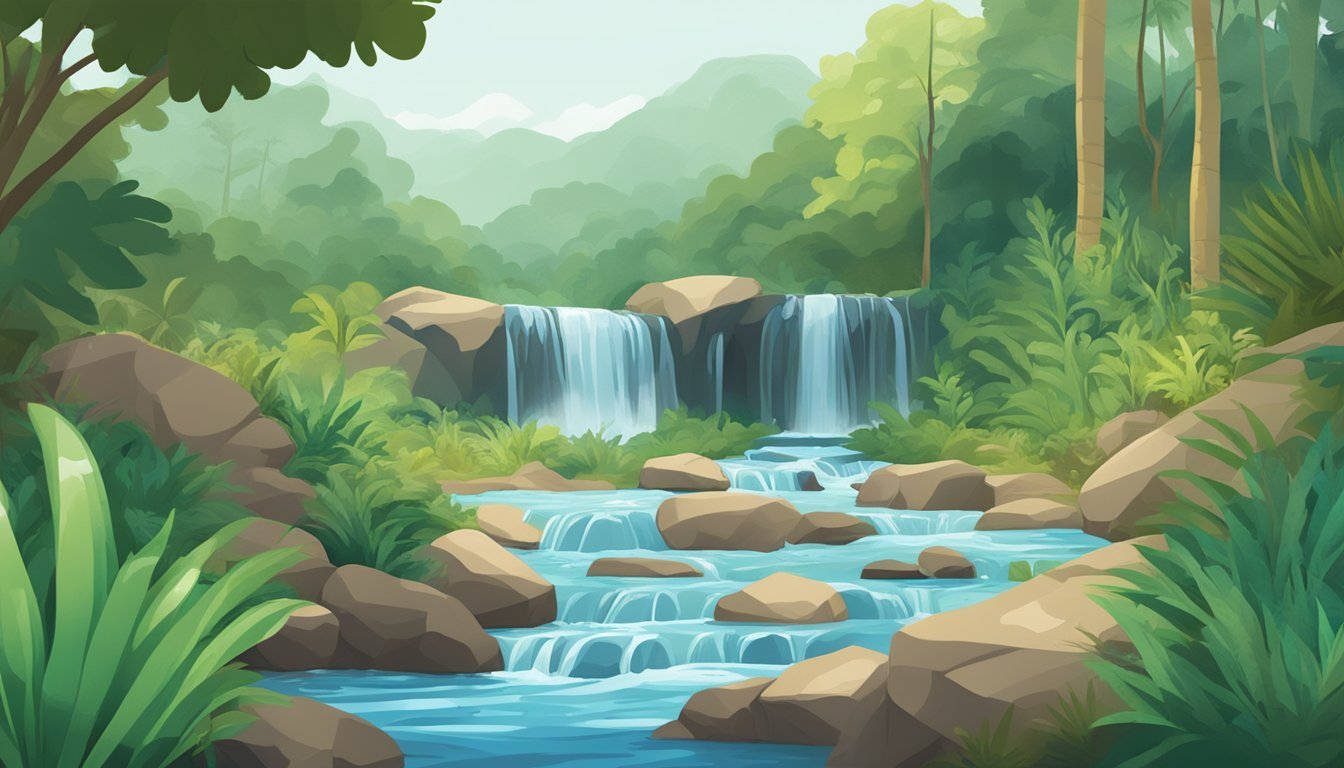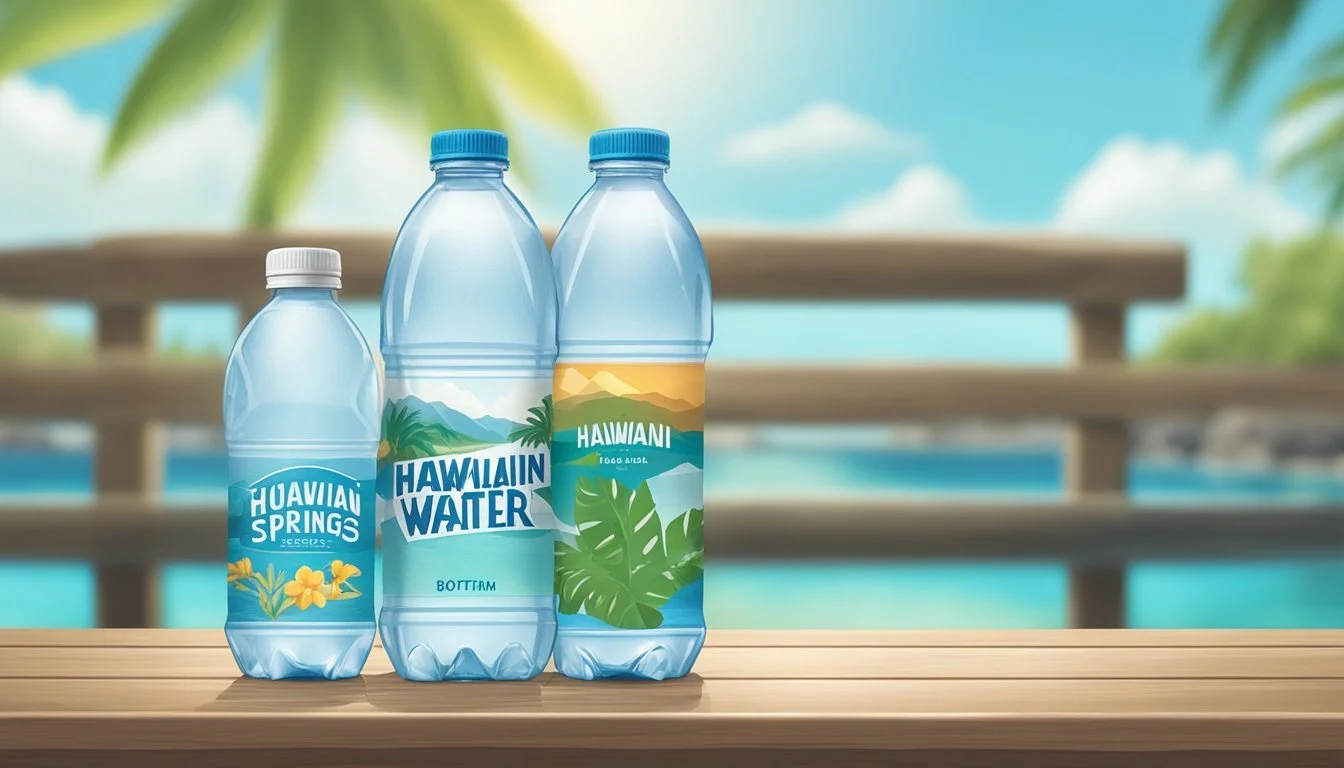Boxed Water vs. Hawaiian Springs
Deciding the Superior Choice
When choosing between Boxed Water and Hawaiian Springs, consumers often find themselves weighing various factors. While Boxed Water Is Better offers an appealing option with its sustainable packaging made primarily from paper, Hawaiian Springs stands out for its pristine taste. For those prioritizing environmental impact, Boxed Water presents a clear advantage with its eco-friendly design.
On the other hand, Hawaiian Springs, sourced from natural Hawaiian aquifers, boasts a refreshingly pure flavor that many find superior to other bottled waters. This brand draws in consumers looking for premium quality, often highlighted by its distinct taste profile.
Ultimately, the choice may come down to what matters most to each consumer. Those who seek sustainability might lean towards Boxed Water, while others who crave an exquisite taste experience might prefer Hawaiian Springs.
Overview of Boxed Water
Boxed Water is an increasingly popular alternative to traditional bottled water, offering several unique benefits related to its packaging, environmental impact, and brand philosophy. It aims to disrupt the bottled water industry with a focus on sustainability and environmental responsibility.
What Is Boxed Water?
Boxed Water is a brand offering water packaged in cartons instead of plastic bottles. The company was founded in 2009 and pioneered this method with the goal of providing a more environmentally friendly packaging solution for water.
Its cartons are designed to be recyclable and are made from a mix of sustainable materials. This includes a significant portion of paper, making it distinct from traditional bottled water options.
Brand Philosophy and Initiatives
Boxed Water Is Better, as the brand is often called, emphasizes sustainability in its operations. The brand's mission is to minimize the environmental impact associated with water packaging.
To support this mission, Boxed Water engages in various initiatives. These include partnering with reforestation projects and committing to reduce plastic waste by promoting plant-based materials in their packaging. They are also involved in educating consumers about the environmental benefits of carton recycling.
Packaging and Environmental Benefits
The packaging of Boxed Water stands out due to its use of paper cartons. These cartons comprise about 74% paper, 25% plastic, and 1% aluminum. This blend ensures the water remains fresh while reducing reliance on petroleum-based plastics.
Additionally, these cartons are recyclable, which significantly lowers their environmental footprint compared to single-use plastic bottles. Boxed Water cartons are also often sourced from sustainably managed forests, contributing to their environmental credibility.
Furthermore, a study conducted by Boxed Water indicated that their packaging choice has a lower overall environmental impact, particularly concerning ozone depletion and global warming potential, when compared to traditional plastic or aluminum containers. This makes Boxed Water an appealing choice for environmentally conscious consumers.
Overview of Hawaiian Springs
Hawaiian Springs is renowned for its naturally alkaline water sourced from renewable aquifers in Hawaii. This section will explore what makes Hawaiian Springs exceptional, its unique source and natural filtration process, as well as its packaging and environmental considerations.
What Makes Hawaiian Springs Unique?
Hawaiian Springs water is characterized by its naturally alkaline pH of 7.7, providing a balanced and refreshing taste. The water is harvested exclusively from artesian wells in Hawaii, ensuring a distinct purity and mineral composition. This exclusivity stands out in the crowded bottled water market.
The brand emphasizes the sustainability of their source, ensuring that their operations do not deplete the aquifers. Hawaiian Springs water is also notable for its mineral content, which enhances flavor and hydrating properties.
Source and Natural Filtration Process
The water sourced by Hawaiian Springs comes from artesian wells, tapping renewable aquifers in Hawaii. These aquifers are naturally filtered through volcanic rock, imbuing the water with essential minerals and a clean, refreshing taste. The filtration process is completely natural, leveraging the unique geological features of the Hawaiian Islands.
This natural filtration guarantees that the water retains its pristine quality and chemical-free composition. The unique volcanic rock filtration not only purifies the water but also infuses it with minerals such as calcium and magnesium, contributing to its alkalinity and taste profile.
Packaging and Environmental Considerations
Hawaiian Springs utilizes durable and fully recyclable containers, a key component of their environmental strategy. The packaging is designed to be both attractive and functional, ensuring that the water stays fresh while minimizing ecological impact. The recyclable nature of the containers supports environmental sustainability, aligning with growing consumer preferences for eco-friendly products.
Moreover, the company’s operations are committed to environmental stewardship, from sourcing water responsibly to using eco-conscious packaging materials. Hawaiian Springs’ partnership with entities like Alaska Airlines helps in promoting their commitment to sustainability, emphasizing recycling and reducing the carbon footprint of their products.
Health Considerations
When choosing between Boxed Water and Hawaiian Springs, several health factors come into play. It's crucial to understand the safety and quality of the bottled water, the facts about alkaline water, and the potential impact of microplastics on health.
Bottled Water Safety and Quality
Safety and quality are paramount when selecting bottled water. Both Boxed Water and Hawaiian Springs focus on delivering high-quality water. Boxed Water uses ultraviolet light, carbon filtration, and reverse osmosis to purify its water. These methods are effective in eliminating impurities.
Hawaiian Springs sources water from deep Hawaiian aquifers, naturally filtering it through volcanic rock. This process adds essential minerals, contributing to a unique taste and potential health benefits. Both brands ensure that their products are safe for consumption, free from harmful contaminants, and meet industry standards.
Alkaline Water: Facts and Misconceptions
Alkaline water, such as Essentia or Core Hydration, has a higher pH level than regular drinking water. Some claim it helps neutralize acid in the bloodstream and provides additional health benefits. However, there is limited scientific evidence to support these claims. The body naturally regulates pH levels, so the benefits of alkaline water remain a matter of debate.
Boxed Water and Hawaiian Springs do not market their products as alkaline. Instead, they emphasize purity and taste. Consumers should consider whether alkaline water is necessary for their diet and look at the nutritional content and source of the water they choose.
Microplastics and Health
Microplastics are a growing concern regarding bottled water. Studies have found tiny plastic particles in many bottled water brands. These particles originate from plastic packaging and can be harmful to health.
Boxed Water packaging offers a potential advantage here by using primarily paper-based materials, reducing the risk of microplastic contamination. Hawaiian Springs, uses standard plastic bottles, which may pose a higher risk of microplastics. Consumers concerned about microplastics might prefer the paper-based option of Boxed Water for greater peace of mind.
Environmental Impact Comparison
Analyzing the environmental impact of Boxed Water and Hawaiian Springs involves examining the carbon footprints of each brand, their approaches to recycling and waste management, and the presence of greenwashing practices.
Carbon Footprint of Water Brands
Boxed Water claims to reduce its carbon emissions by using 92% plant-based packaging. This highly renewable content is designed to lower greenhouse gas outputs compared to traditional plastic bottles. On the other hand, Hawaiian Springs uses conventional plastic bottles, which are known for having a higher carbon footprint due to the manufacturing and transport processes.
Manufacturing plastic is energy-intensive and releases significant amounts of CO2. In contrast, the paper materials used by Boxed Water are designed to minimize this impact. Understanding this difference can help consumers make more eco-conscious choices.
Recycling and Waste Management
Boxed Water's packaging consists of 74% paper, 1% aluminum, and 25% plastic film, making it partially recyclable. However, the recycling process for these types of cartons is less widespread compared to traditional plastic. This can limit the effectiveness of Boxed Water’s sustainability efforts if local recycling facilities are not equipped to handle them.
Hawaiian Springs bottles are made from PET plastic, which is highly recyclable and more commonly accepted at recycling centers. Despite being recyclable, PET bottles contribute significantly to plastic pollution when not properly disposed of, leading to environmental degradation.
Effective waste management policies and consumer participation in recycling programs are crucial for both brands to limit environmental impact.
Greenwashing in the Bottled Water Industry
Greenwashing refers to brands misleading consumers about the environmental benefits of their products. Boxed Water promotes its use of renewable trees and plant-based packaging. While these claims have some validity, skepticism arises around the true recyclability and carbon footprint reduction of their cartons, especially if local recycling options are not available.
Hawaiian Springs does not emphasize eco-friendly practices in the same way. However, it is important to scrutinize their marketing claims to understand if they might be overstating their environmental benefits.
Critics argue that companies often use greenwashing to appeal to eco-conscious consumers without making significant changes to their production methods or sustainability policies. This practice can mislead consumers and hinder genuine environmental progress.
Consumer Choice and Behavior
Consumer preferences in bottled water reveal significant trends shaped by environmental awareness and evolving lifestyle needs.
Trends in Water Consumption
Consumers increasingly prioritize health and convenience. Bottled water remains a popular choice due to its portability and perceived purity. Brands like Boxed Water and Hawaiian Springs cater to these needs by offering easily accessible hydration solutions.
The growth in the bottled water market is also influenced by consumers seeking alternatives to sugary drinks. This trend highlights a shift toward healthier hydration options, with people often choosing bottled water and reusable water bottles over sodas and juices.
The Shift to Sustainable Options
Environmental concerns drive many consumers to seek sustainable water packaging. Boxed Water's use of paper-based cartons appeals to eco-conscious individuals aiming to reduce plastic waste. Hawaiian Springs, though utilizing plastic bottles, emphasizes local sourcing and minimal environmental impact.
The popularity of refillable containers and water fountains also reflects this shift. Consumers increasingly recognize the environmental benefits of using alternatives to single-use plastics. This has led to a rise in reusable water bottle sales and infrastructure supporting water refills.
Impact of Consumer Decisions
Consumer choices influence both market trends and environmental sustainability. Purchasing decisions between Boxed Water and Hawaiian Springs reflect values prioritizing convenience, health, and eco-friendliness. Support for sustainable packaging encourages companies to innovate and reduce their carbon footprints.
By opting for refillable and reusable solutions, individuals decrease plastic pollution and support water sustainability efforts. This change not only benefits the environment but also promotes a culture of responsible consumption, signaling to companies the importance of sustainable practices.
Market and Industry Overview
The bottled water industry has seen considerable growth in recent years, with many leading brands innovating and adhering to strict regulations. Key players such as Boxed Water and Hawaiian Springs have carved out their niches among more established brands.
Leading Brands and Their Offerings
Several notable brands dominate the market. Dasani, Aquafina, and Poland Spring have been industry staples for years. Smartwater and Voss cater to consumers seeking premium options. Boxed Water promotes sustainability with eco-friendly packaging, while Hawaiian Springs emphasizes natural purity sourced from Hawaii's volcanic aquifers.
Dasani and Aquafina primarily offer purified bottled water, sourced from municipal supplies, and treated through reverse osmosis. Poland Spring provides spring water, recognized for its natural mineral content. Each brand differentiates itself through proprietary processes and marketing strategies focusing on quality, flavor, and health benefits.
Innovations in Bottled Water Industry
Innovation plays a crucial role in the sector. Boxed Water and other eco-conscious brands are leading efforts in sustainable packaging. They use recyclable cartons, reducing plastic waste significantly. Traditional brands like Dasani and Aquafina are also exploring biodegradable bottles and incorporating recycled materials into their packaging.
Advanced filtration technologies are another area of innovation. Smartwater uses vapor distillation, while Voss incorporates multi-stage filtration systems to enhance product purity. Additionally, some companies are introducing added-value products like vitamin-enriched and infused waters, catering to health-conscious consumers.
Regulations and Standards
The bottled water industry is tightly regulated to ensure safety and quality. In the United States, the Food and Drug Administration (FDA) oversees bottled water, enforcing standards that companies must meet. These regulations cover source protection, water treatment, and labeling requirements to prevent misleading information.
Brands like Poland Spring and Hawaiian Springs must comply with both federal and local regulations. They regularly test their water for contaminants and adhere to guidelines set by organizations such as the International Bottled Water Association (IBWA). Compliance with these strict standards reinforces consumer trust and ensures product integrity across all brands.
Alternative Packaging Options
Several sustainable options beyond traditional plastic bottles exist for consumers seeking environmentally friendly water packaging. These alternatives range from plant-based plastics to aluminum cans and involve both established products and emerging innovations in the market.
Plastic Alternatives and Bioplastics
Plant-based plastics offer a more sustainable choice than conventional plastic water bottles. Derived from renewable sources like corn starch and sugarcane, these materials aim to reduce reliance on fossil fuels. Though they still include some plastic, the environmental impact can be significantly lower.
These bioplastics are recyclable, yet the infrastructure for effective recycling may vary by location. Some brands also use compostable bioplastics, although these require industrial composting facilities to break down efficiently.
Awareness of local recycling capabilities is crucial for consumers opting for these alternatives.
Canned Water and Aluminum Options
Aluminum cans stand out as a highly recyclable alternative to plastic. Aluminum is infinitely recyclable without degradation in quality, making it a robust option for reducing environmental impact. Brands like Liquid Death and Open Water have popularized canned water, emphasizing sustainability and convenience.
Additionally, boxed water products like Tetra Paks incorporate aluminum layers for durability and preservation. These combine the recyclability of aluminum with paper-based packaging, although mixed materials can complicate recycling processes.
Understanding local recycling capabilities for both aluminum and composite cartons is key when considering these options.
Emerging Trends in Water Packaging
The market for water packaging continues to innovate with emerging trends like boxed water and advanced sustainability features. Boxed Water Is Better, for instance, uses paper-based cartons that are 92% renewable, sourced from FSC-certified forests. This reduces plastic use and minimizes carbon footprints.
Other trends include flavored water in sustainable packaging and customizable water bottles with built-in filtration systems.
Brands continue to explore new materials and designs, such as algae-based plastics and fully biodegradable containers, to meet consumer demand for environmentally conscious products. These innovations aim to balance convenience and sustainability, reshaping the future landscape of water packaging.
The Bottom Line
Boxed Water and Hawaiian Springs offer distinct experiences and benefits. Sustainability becomes a significant factor: Boxed Water uses cartons made from a mix of sustainable paper, aluminum, and plastic film which reduces environmental impact. Its design helps lower plastic consumption and promote recyclability, making it appealing to eco-conscious consumers.
Hawaiian Springs, on the other hand, offers the allure of natural spring water sourced from Hawaii. It often highlights its health benefits, including a clean, crisp flavor profile, and the presence of naturally occurring minerals. This appeals to individuals seeking water with a perceived higher quality due to its unique source.
For those placing a premium on environmental concerns, Boxed Water’s eco-friendly packaging may tip the scale in its favor. Conversely, consumers prioritizing taste and health advantages might lean towards Hawaiian Springs.
Water brands need to address both sustainability and taste to capture a broader market. Ultimately, the choice depends on individual priorities ranging from environmental impact to the sensory pleasure of the water itself.
Consumers can often find more information or ask questions by reaching out to the brands directly through their websites or email. This can aid in making an informed decision tailored to personal preferences and values.





